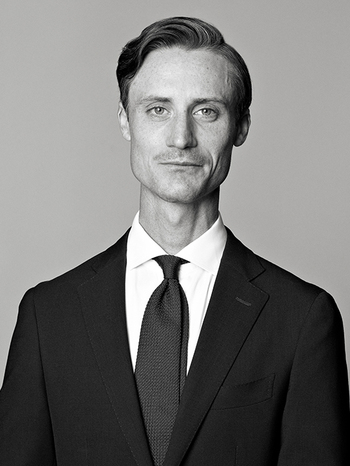Eugène Jansson
"Vintereftermiddag"
Signed Eugène Jansson. Executed 1894. Canvas 74 x 104 cm. Stretcher inscribed "Vinterkväll i det röda skenet".
Provenance
Earlier in the collection of Consul Anders Mellgren, Gothenburg.
Private Collection.
Literature
Nils G Wollin, "Eugène Janssons måleri", SAK, 1920, listed in the catalogue under the year 1894, cat. no.54.
Inga Zachau, "Eugène Jansson - den blå stadens målare", 1997. Mentioned p. 90.
More information
In the painting "Vintereftermiddag" the gaze is drawn from the desolate hills of Söder out over the snow-covered Årstafjärden towards the distant shores at Årstavik and Liljeholmen. Low factory buildings and residences crowd the remote shore, with smoking chimneys and faint sources of light gleaming through the mist. The only movement in the image is the swirls of smoke rising towards a dramatic sky that transitions from a faint yellow and green on the horizon to high clouds in pink. With his characteristic cross-like brushwork, the artist has brought the air to life and made the atmosphere shimmer.
The city is a recurring theme in Eugène Jansson's entire artistic career. When Jansson chose to seek his subjects outside the city limits, he often depicted landscapes devoid of figures. In his paintings, there is solitude - "the incurable solitude of the soul," as one of his writer friends is said to have put it. "Vintereftermiddag" was executed in 1894, during a period referred to as the artist's "late blue period." In the early 1900s, the subject matter would shift from the city's desolate streets in twilight to depicting the people who made it a vibrant place.
On the continent, artists sought new perceptions of what expressed reality, and new ways of seeing and working were developed. In Paris, the capital of art, young aspiring artists could encounter Impressionism and free landscape painting. However, Eugène Jansson was not among the Swedish artists who went to Paris to study and paint. After a period at the Royal Academy of Fine Arts, he likely stayed in Stockholm, perhaps due to financial reasons, but was influenced by French realism, Impressionism, and outdoor painting through the Swedish artists in Paris, Karl Nordström, Richard Bergh, and Nils Kreuger. They would all return to Sweden eventually. Friendship, especially with Karl Nordström, provided insight into the struggle of the new art for its space but also an opportunity to socialize with the young people fighting for change, not only in the art world but in society as a whole. Eugène Jansson was a cherished friend who went by the nickname "Fotogen" in his circle of acquaintances.
The artist's financial situation was difficult as he was also supporting his mother and brother. There were many relocations within the Söder district of Stockholm, first from Timmermansgatan 2 to Hornsgatan 71. Just a few minutes away lay Årstaviken and Rackarbergen. It was here that the painting "Vintereftermiddag" for the auction was created, and in the same year, 1884, "Islossning," a winter and spring scene painted from the heights of Söder with a view over Årstaviken. Over time, Jansson's finances improved, and he moved to Bastugatan 40, now with a studio and a splendid view over Riddarfjärden, where he remained until his death.
For Eugène Jansson, these small relocations within the city corresponded to his friends' travels abroad. The views from the heights of Söder continually provided the artist with new perspectives and new subjects. He was inspired by the city's streets and outskirts and blended impressions from various sources to develop his unique view of Stockholm – in the blue twilight. The subjects of the "late blue period" are not snapshots of everyday life but represent something more poetic, a symbolic image of a felt emotion.



























































